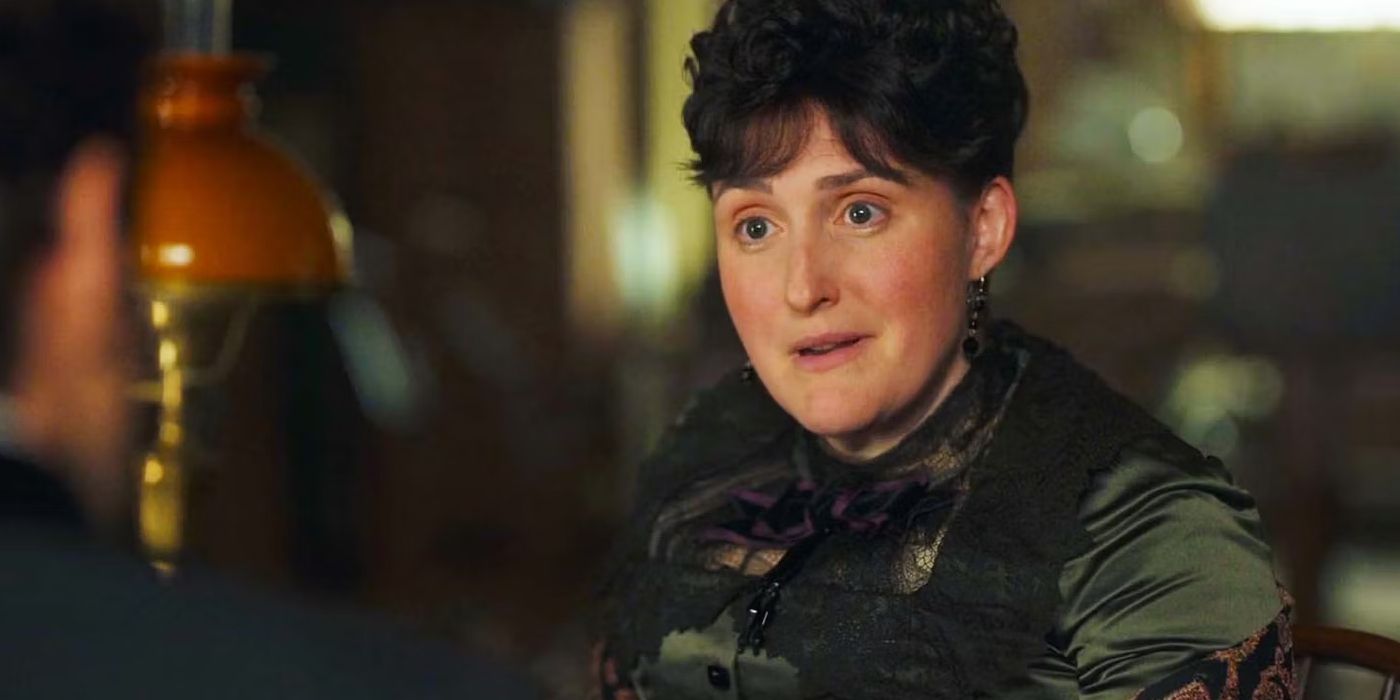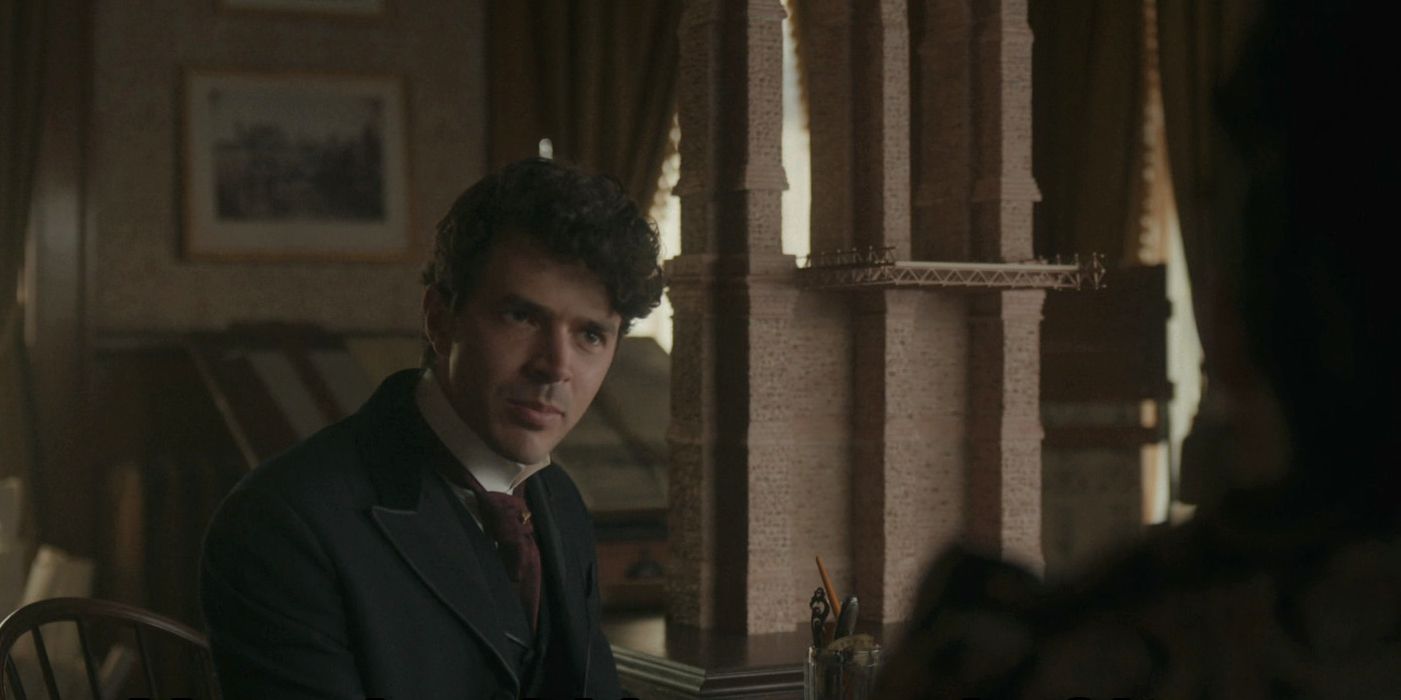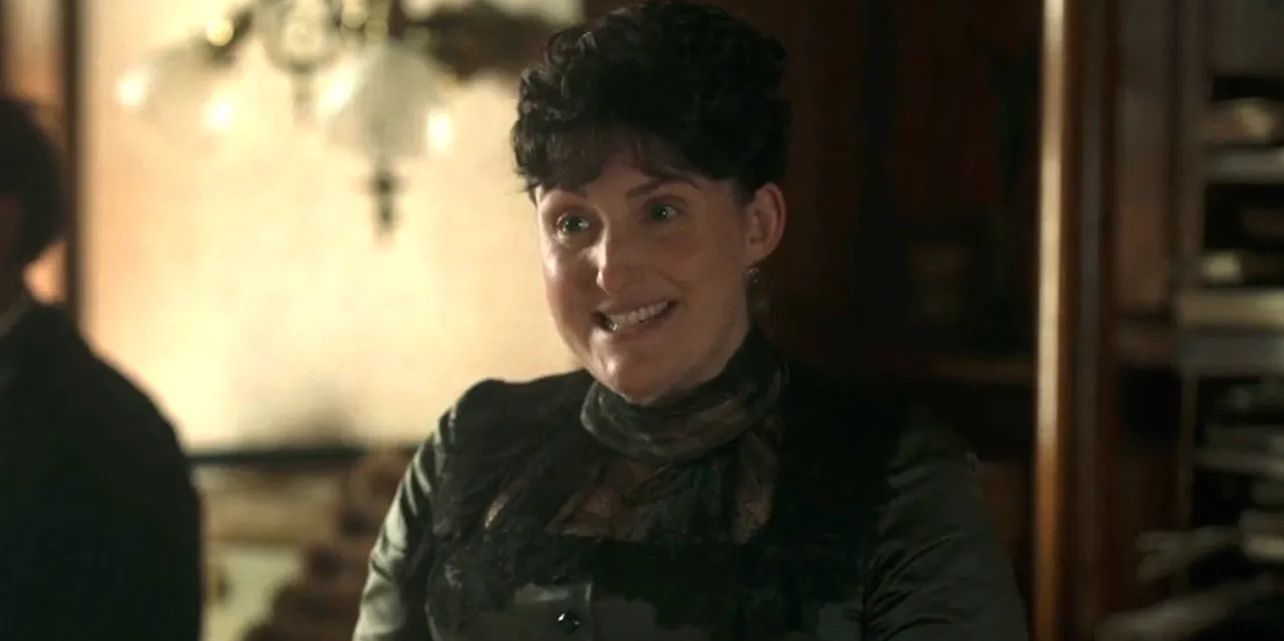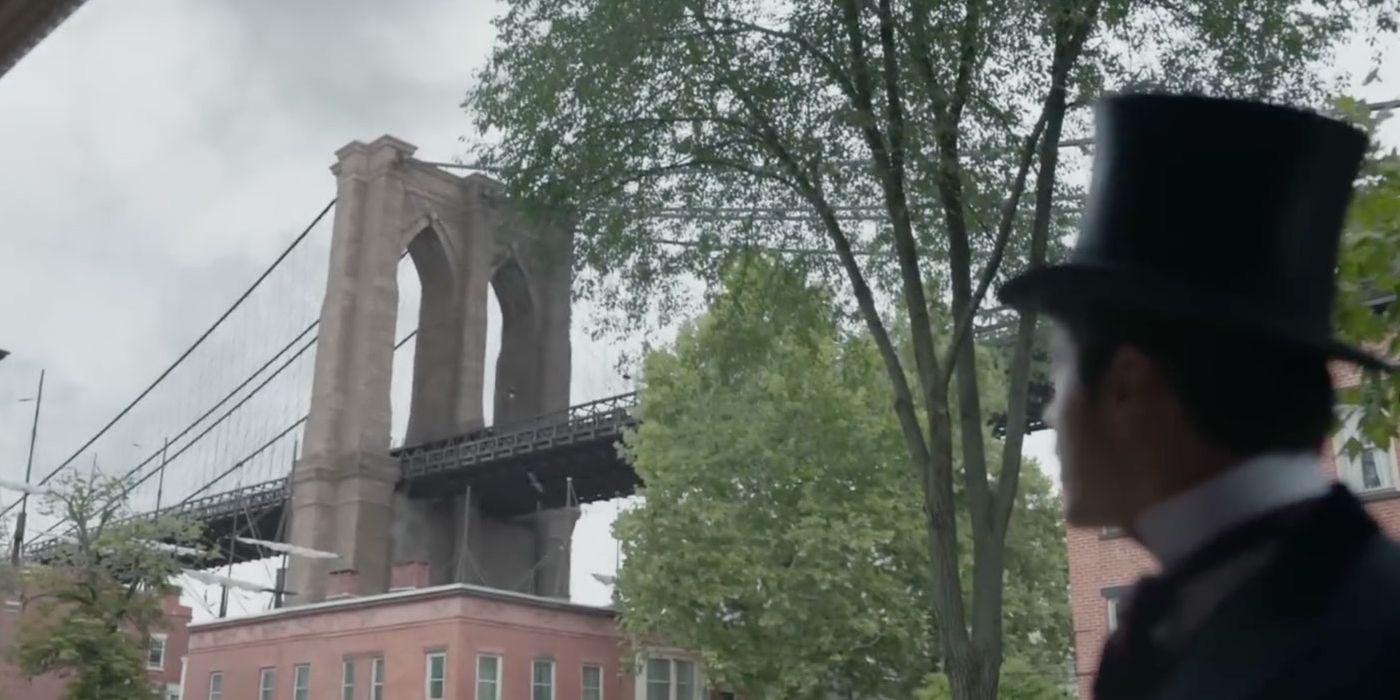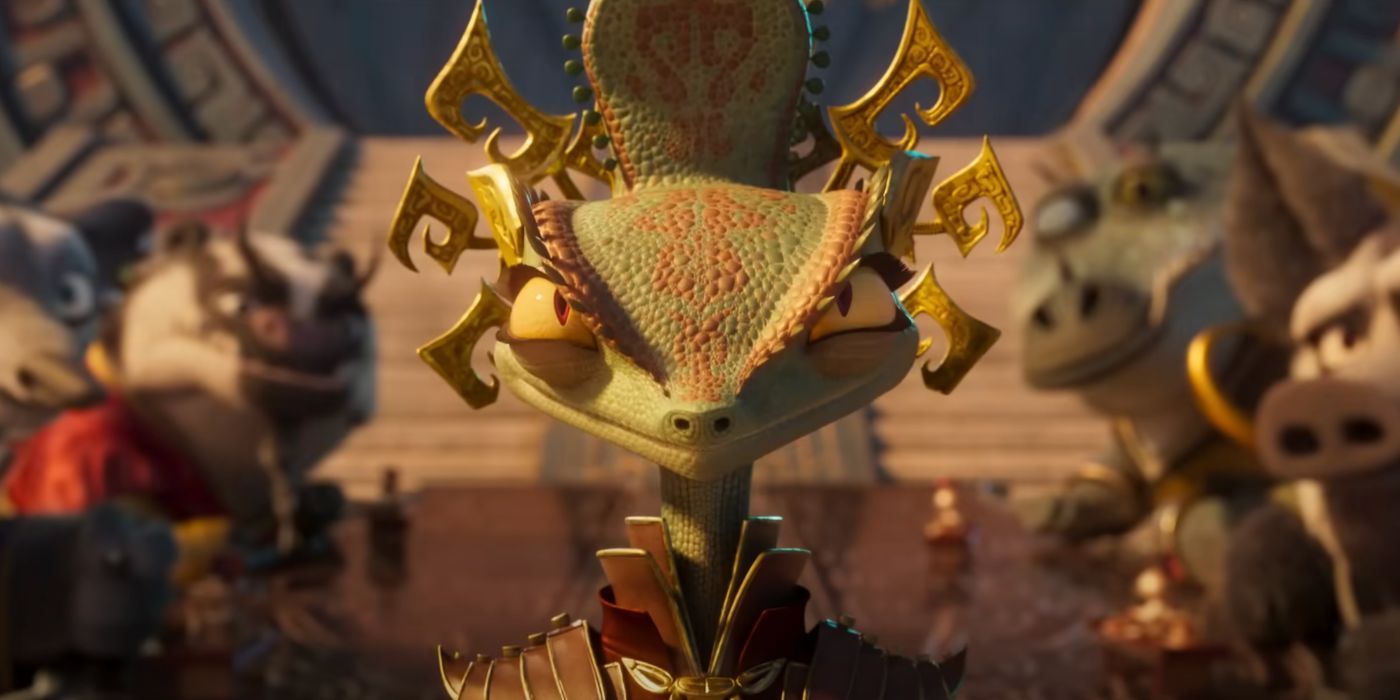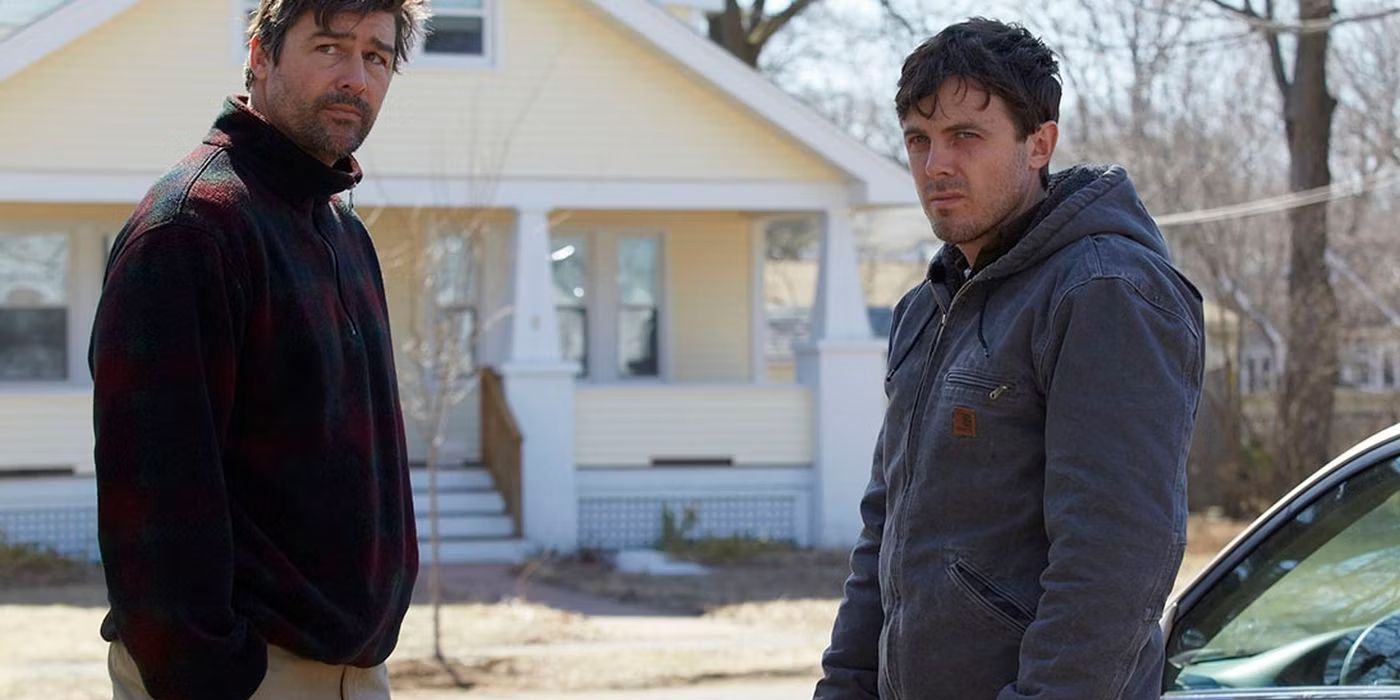Editor’s Note: The following contains spoilers for The Gilded Age Season 2.
The Big Picture
- The Gilded Age often uses history within the story, and that trend is continued with the introduction of Emily Roebling, the woman behind the Brooklyn Bridge.
- While the show’s portrayal of Emily Roebling’s story is not entirely accurate, it sheds light on her often-forgotten work, showcasing the accomplishments of this incredible woman while acknowledging the challenges she faced.
- Though the story is largely fact, the contributions of her husband is downplayed to give her a much-earned spotlight.
The Gilded Age explores an interesting time in history. Set in the 1880s New York, there were no major wars in this time frame. Instead, an industrial revolution allowed many families to rise to prominence with their newfound fortunes. Yet, as The Gilded Age shows, that was not always easy. The show focuses on New York’s elite society as the old families clash with the new money, especially Bertha Russell (Carrie Coon), who is determined to procure a position for herself and her family. While much of the story is fictional, Season 2’s central conflict borrows from history as the characters engage in a battle over New York’s opera house. While Bertha endorses the new MET, the established families support the Academy of Music. But that conflict isn’t the only piece of reality to make its way into the historical drama. Many of the characters in The Gilded Age are based on real people, showing Jullian Fellowes‘ attention to detail.
But with reality comes good and bad. The show addresses racism through Peggy Scott’s (Denée Benton) experiences, and, of course, it shows the sexism that limits Mirian Brooks’ (Louisa Jacobson) options. Yet Season 2, Episode 5, “Close Enough To Touch,” offers one historically accurate success story of an incredible woman. In the show, Larry Russell (Harry Richardson) discovers a mystery that it took the world decades to acknowledge: that a woman oversaw the making of the Brooklyn Bridge. Emily Warren Roebling (Liz Wisan) was a historical figure, though she received little recognition in her lifetime. In her brief appearance, The Gilded Age couldn’t fully unpack her incredible story, but what is included is largely true. She did her work in secret, accomplishing a feat that few would have entrusted to a woman at that time. But the show’s portrayal isn’t entirely accurate. While Emily Roebling was instrumental in the project, she didn’t do it alone. Still, The Gilded Age ‘s inclusion of Emily Roebling’s incredible story is worth the time.
The Gilded Age
A wide-eyed young scion of a conservative family embarks on a mission to infiltrate the wealthy neighboring clan dominated by ruthless railroad tycoon George Russell, his rakish son, Larry, and his ambitious wife, Bertha.
- Release Date
- January 24, 2022
- Cast
- Carrie Coon, Morgan Spector, Louisa Jacobson, Denée Benton, Taissa Farmiga, Harry Richardson, Blake Ritson, Thomas Cocquerel, Simon Jones, Jack Gilpin, Cynthia Nixon, Christine Baranski, Donna Murphy, Debra Monk
- Main Genre
- Drama
- Rating
- TV-MA
- Seasons
- 2
- Creator
- Julian Fellowes
- Network
- HBO Max
How Does ‘The Gilded Age’ Include Emily Roebling?
The Gilded Age introduces this character through Larry Russell, whose father is a trustee for the construction of the Brooklyn Bridge. Short on time, George (Morgan Spector) asks Larry to take over his duties, expressing his concerns about the often absent chief engineer, Mr. Roebling. Larry takes on the task, dropping by Roebling’s house, where much of the work is being done. There, he learns that Roebling is away and is rushed out the door. But Larry hears Mrs. Roebling give instructions to the workers and pieces together the truth. When he confronts her, Mrs. Roebling tells her story.
Learning the process of building bridges through independent study with her husband, she circumvented the rampant sexism of the time to gain an understanding of the job. When her father-in-law died, her husband took over the Brooklyn Bridge project. But his illness caused problems, leaving Mrs. Roebling to assist, carrying out parts of the business in her husband’s name, but this was a collaborative effort. Eventually, Mr. Roebling’s condition worsened, and Mrs. Roebling took control. Though several others working on the project are aware, she must hide the fact that she was in charge from the public for fear that sexism would cause society to reject the bridge. Larry congratulates her work, pointing out the injustice that she cannot be acknowledged as the engineer. He agrees to keep the secret, allowing her to complete what she began. Mrs. Roebling’s part in the show is small, but the history behind it is fascinating. Yet The Gilded Age isn’t a strictly accurate account. After all, there was no Larry Russell to discover and accept the truth. However, the show highlights Emily Roebling’s significant contribution in the face of prejudice.
How Much of Emily Roebling’s Story in ‘The Gilded Age’ Is True?
The show follows much of Emily Roebling’s story, portraying her as a capable woman, hiding that she is behind the creation of the bridge and that much is true. Though it was hardly common knowledge at the time, Emily Roebling is now recognized for her contributions to the Brooklyn Bridge, which was the world’s longest suspension bridge when it was first built. The project took fourteen years and was originally given to her father-in-law, John A. Roebling. While he began, his son, Washington A. Roebling went to study Europe’s bridges, as the show suggests, accompanied by his pregnant wife. John Roebling died early in the construction, and Washington Roebling took over, as Mrs. Roebling tells Larry in The Gilded Age.
Her husband suffered from illness, leaving him unable to accomplish every task, so Emily Roebling became his secretary, negotiating contracts and preventing her husband from being ousted from the project by the Mayor of Brooklyn. She was an important part of the historic project, inspiring the current plaque on the bridge that reads, “Back of every great work we can find the self-sacrificing devotion of a woman.” Without the opportunity for a formal education, Emily Roebling never shied away from the difficult task. Though she never officially held the title of chief engineer, Emily Roebling did the work despite her lack of schooling. After its completion, people proclaimed the Brooklyn Bridge the “Eighth Wonder of the World” just for its impressive design, but the fact that it was largely built by a clever woman who had to spend time covering her own tracks makes it more amazing. Fortunately, her role was eventually recognized, as now she is known to be more than a dedicated wife translating her husband’s ideas, but a capable member of the project in her own right, and The Gilded Age certainly shows her as that. But, while these facts are true, the show took it further.
‘The Gilded Age’ Changes Bits of Emily Roebling’s Story
Though her appearance in The Gilded Age was brief, Mrs. Roebling’s story is similar to the true version, yet there is one notable change. Unlike The Gilded Age suggests, she did not build the Brooklyn Bridge alone. The show made no secret that it was a group effort, with a houseful of workers at her side, but more than that, Emily Roebling was not solely in charge. Though he couldn’t be as active as most people would be as a chief engineer, Washington Roebling was an important part of the project. Emily Roebling’s contribution is undeniable. Erica Wagner even admitted so in a biography about Washington Roebling, but even so, Wagner notes that Washington was a constant presence. Despite being unable to go to the site or attend meetings, he would watch the progress from his room with a telescope and binoculars. The husband and wife duo created the landmark together, each necessary to the bridge’s completion.
Yet this doesn’t come through in The Gilded Age, which says more about Washington being away in Newport than his illness keeping him from the project. Though the show wanting to highlight Emily Roebling’s contribution is understandable, it isn’t entirely true. However, it certainly hits the main points of history. Years later, Emily Roebling wrote to her son, saying, “I have more brains, common sense, and know-how generally than have any two engineers, civil or uncivil, and but for me, the Brooklyn Bridge would never have had the name Roebling in any way connected with it!” The Gilded Age certainly gets this across, though it sidelines Washington Roebling. Even with the small change, The Gilded Age taking the time to acknowledge the often-forgotten work of Emily Roebling is a great addition to the show.
The Gilded Age Season 2 airs on Sunday nights on HBO and is available to stream on Max.
WATCH ON MAX

